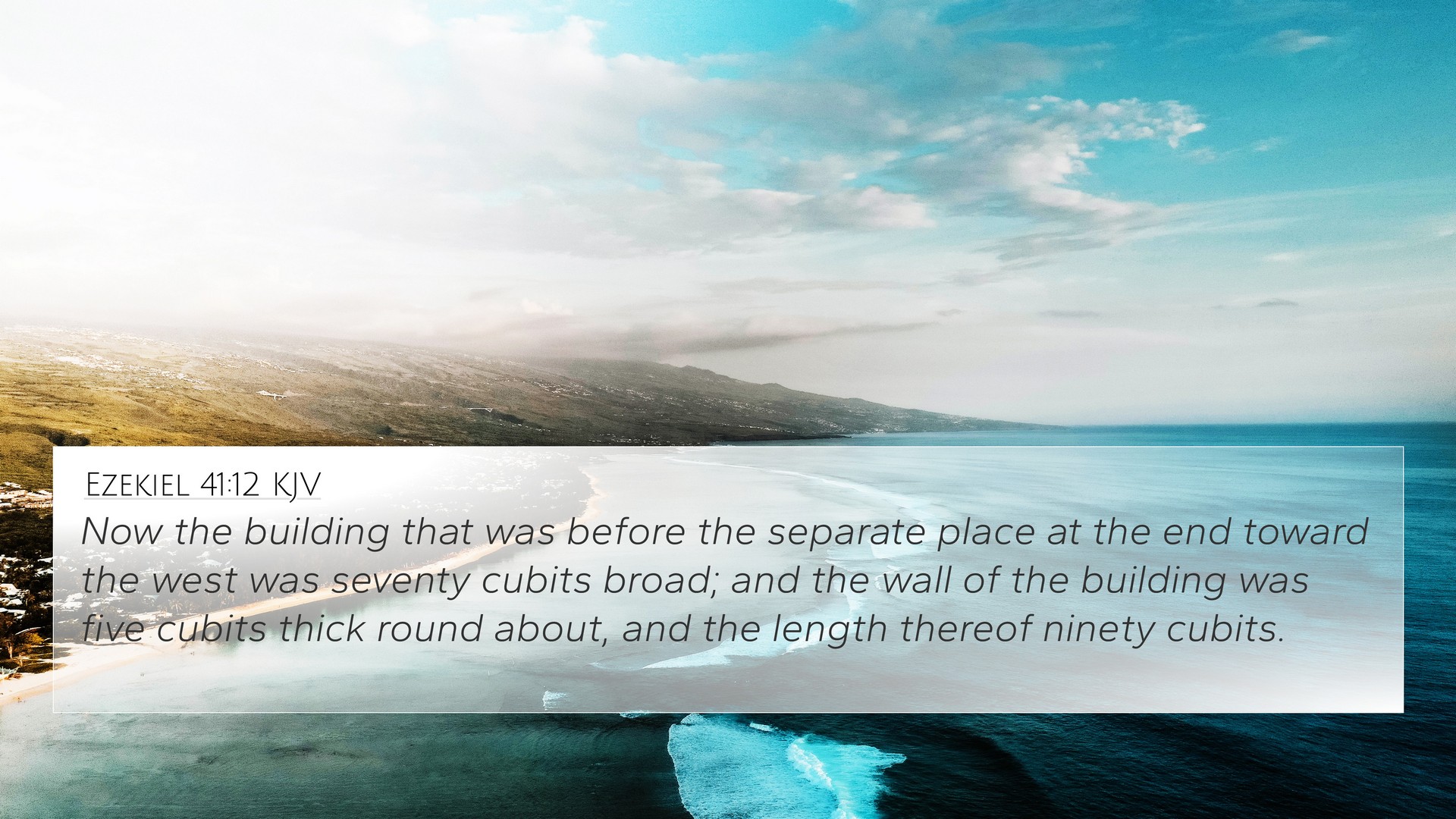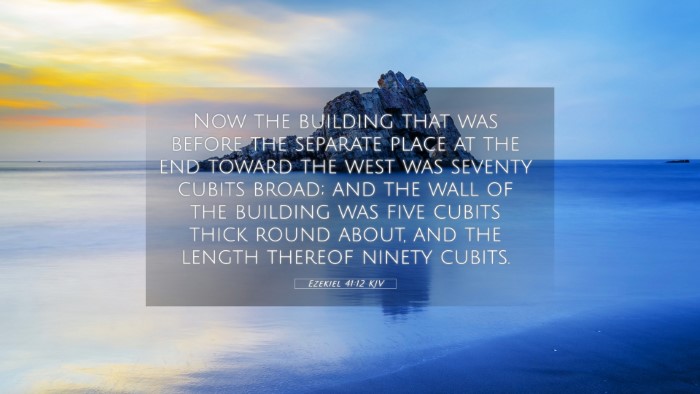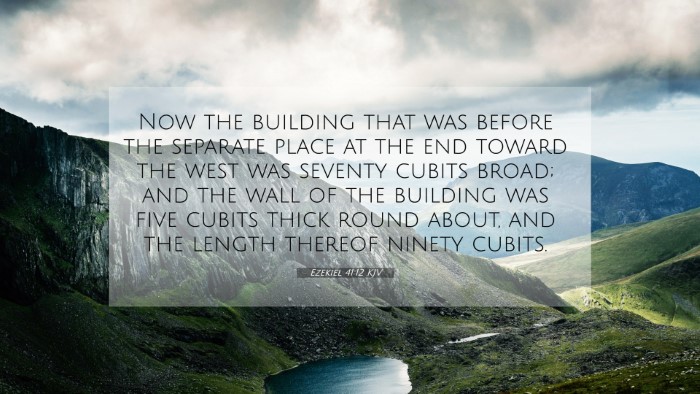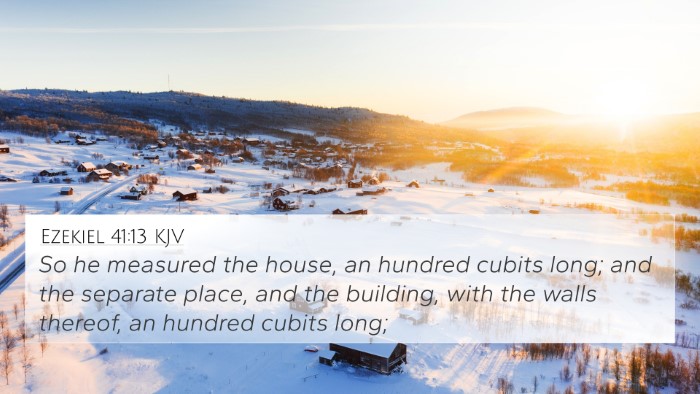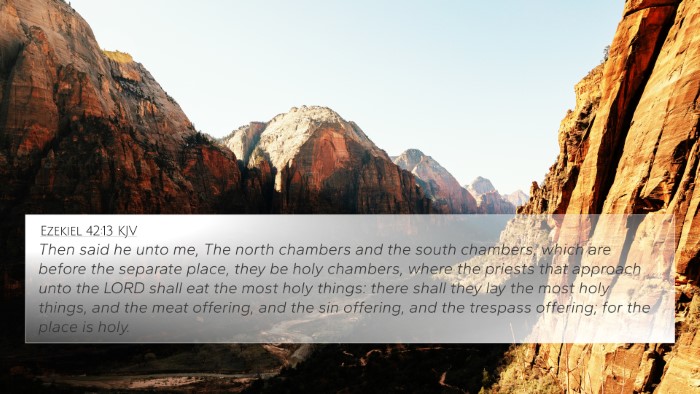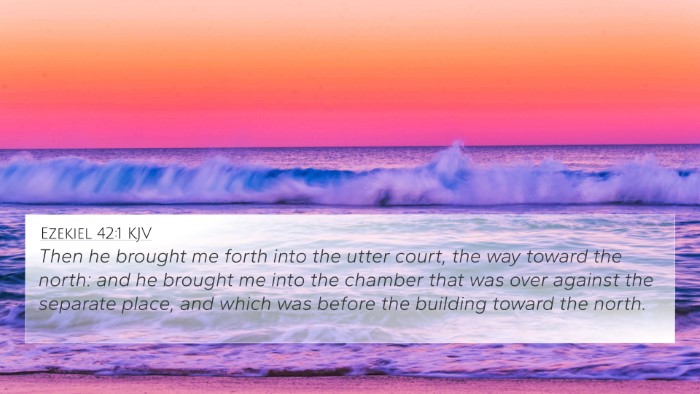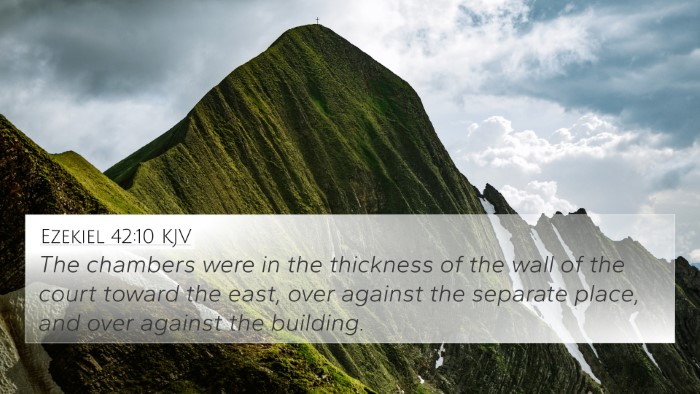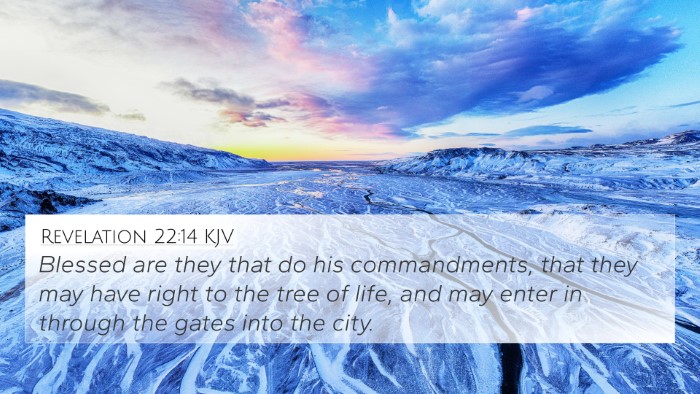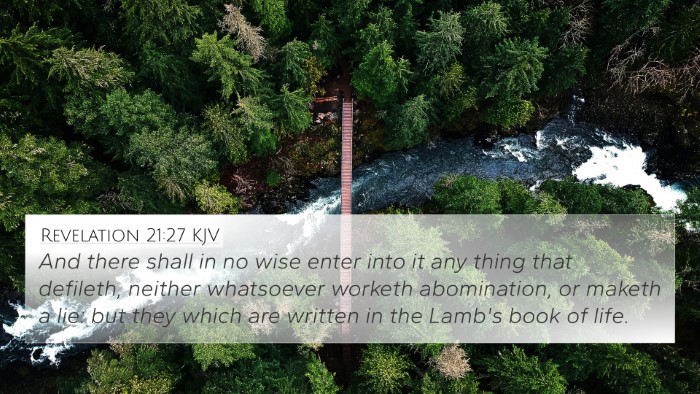Ezekiel 41:12 - Summary and Interpretation
Ezekiel 41:12 states: "And the building that was before the separate place at the end toward the west was seventy cubits broad; and the wall of the building was five cubits thick round about, and the length of ninety cubits."
This verse describes specific dimensions of a structure in Ezekiel's vision of the temple, emphasizing the precision and significance of measurements in the context of the divine architecture.
Meaning and Insights
The verse serves multiple purposes, inviting a deeper understanding of Biblical architecture and spiritual significance. Here are key insights drawn from renowned public domain commentaries.
Dimensions and Symbolism
- Matthew Henry: This passage highlights God's glory and the divine order reflected in the exactness of the measurements. The structure's dimensions reinforce that God's dwelling place is meticulously designed and sacred.
- Albert Barnes: Barnes emphasizes the significance of the 70 cubits, often interpreted as a symbol of completeness, while the wall's thickness signifies protection. The imagery invites contemplation on God's fortification of His people.
- Adam Clarke: Clarke elaborates on the architectural aspects, suggesting that the dimensions provided reveal a sophisticated design. He implies the importance of the structure in maintaining God's holiness and accessibility.
Thematic Connections
The examination of Ezekiel 41:12 encourages thematic analysis and connects to various Biblical concepts.
- Divine Presence: The structure's description echoes themes found throughout scripture where the presence of God is closely associated with holy spaces (see Exodus 25:8).
- Spiritual Protection: The thick walls metaphorically represent God’s protection over His people, similar to the God of Israel as a fortress (Psalm 91:2).
- Order in Worship: The precise measurements suggest a call to order in divine worship, paralleling guidelines prescribed in Exodus 25-30 regarding the tabernacle.
Bible Verse Cross-References
This verse can be related to several critical Biblical texts, creating connections that enhance understanding:
- Exodus 25:8: God commands the making of a sanctuary for His dwelling.
- 1 Kings 6:2: Description of Solomon's temple dimensions.
- Revelation 21:16: The New Jerusalem's measurements signify God's eternal dwelling with humanity.
- Psalms 27:4: A desire to dwell in the house of the Lord.
- Isaiah 54:2: A call to enlarge one’s dwelling reflects abundance and future glory.
- Matthew 5:14: The city on a hill signifies God's people shining forth in the world.
- Hebrews 9:24: The heavenly sanctuary is contrasted with the earthly temple.
Comparative Analysis and Inter-Biblical Dialogue
The interplay of various scriptures elucidates broader theological themes:
For instance, examining 1 Kings 6:2 and Ezekiel 41:12 reveals parallels in temple architecture, while Revelation 21:16 connects the concept of God’s dwelling with humanity in the future. This thematic alignment fosters a greater appreciation for the nature of God’s plans through different ages.
Tools for Bible Cross-Referencing
Using a variety of resources can aid in effective scripture studies:
- Utilizing a Bible Concordance helps in locating themes and cross-references efficiently.
- A Cross-Reference Bible Study can deepen the understanding of connections between verses.
- Employing a Bible Cross-Reference Guide assists in tracing the thematic links across the text.
Conclusion
Ezekiel 41:12 serves as a rich locus for exploring God's design and spiritual truths within scripture. The architectural significance and symbolic meanings relate deeply to themes of divine protection and the sacredness of worship spaces.
By engaging in Bible verse cross-references, we uncover a tapestry of interconnected teachings, enhancing our grasp of scripture and its applications for today.
